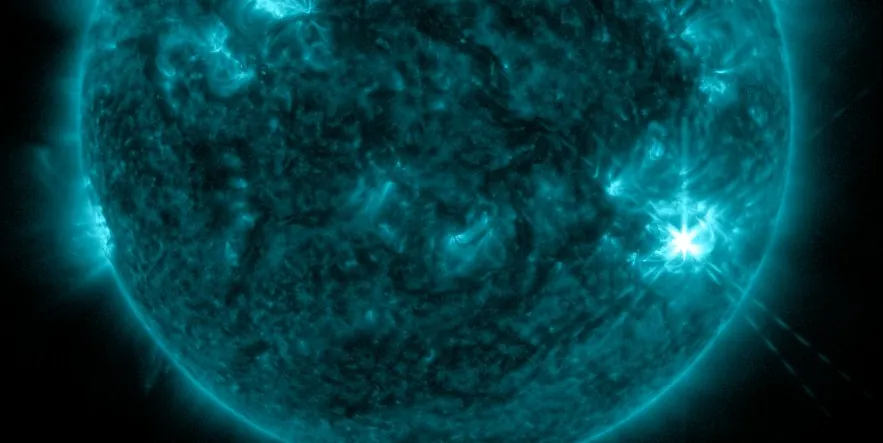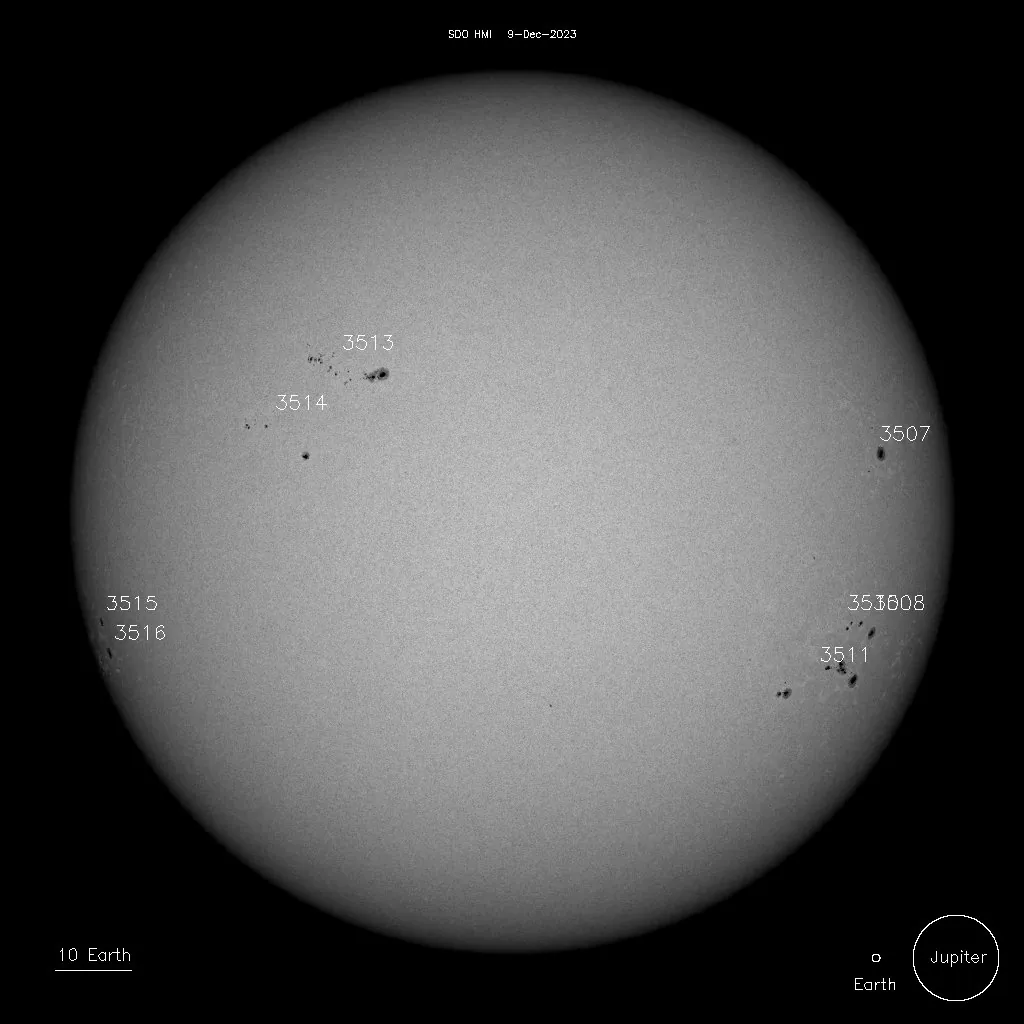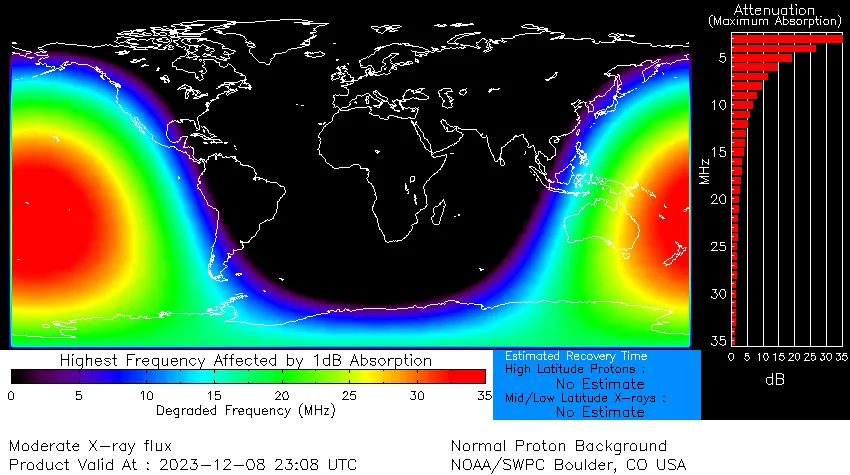Impulsive M5.4 solar flare erupts from Region 3511, multiple filament eruptions

An impulsive solar flare measuring M5.4 erupted from Active Region 3511 at 23:07 UTC on December 8, 2023. The event started at 22:57 UTC and ended at 23:14.
There were no radio signatures detected that would suggest a coronal mass ejection (CME) was produced. Even if it was, the location of the source region — close to the Sun’s western limb — does not favor Earth-directed CMEs.
This was the largest event in 24 hours to 00:30 UTC on December 9.
Radio frequencies were forecast to be most degraded over the Pacific Ocean at the time of the flare.
Regions 3511 and 3513 (N19E27, Eai/beta-gamma) were responsible for the bulk of the C-class flare activity observed during this period. Slight decay was observed in the trailing spots of Regions 3507 (N07W53, Cso/beta), 3510 (S15W48, Hax/alpha), and 3513. Slight growth occurred in the leader spots of Region 3511.
Additionally, two new spots rotated onto the SE limb and were numbered 3515 (S15E74, Hax/alpha) and 3516 (S19E74, Hsx/alpha).


During the same period, several filament eruptions were recorded. The first was a 40-degree filament near N40E50 that started at 01:00 UTC on December 8. Its associated Coronal Mass Ejection (CME), observed off the northwest limb at 04:28 UTC in SOHO/LASCO C2 imagery, is not expected to impact Earth.
Another filament eruption near S20E05 occurred at 05:07 UTC, but no discernible CME was observed in coronagraph imagery. An asymmetric halo CME observed at 16:24 UTC was determined to be backsided, indicating no Earth-directed threat.
Furthermore, the CME emanating from the southwest limb at 21:24 UTC on December 7, linked to a large prominence eruption at 19:36 UTC on the same day, was analyzed and deemed not to have an Earth-directed component.
Solar activity over the next three days is expected to be low, with a 40% chance for M-class flares.
Over the past 24 hours, the greater than 2 MeV electron flux reached high levels, with a notable peak flux of 1 400 pfu observed at 15:20 UTC on December 8. The greater than 10 MeV proton flux remained at background levels during this period.
The greater than 2 MeV electron flux is forecasted to be at moderate to high levels on December 9 and 10, influenced by the coronal hole high-speed stream (CH HSS). On December 11, moderate electron flux levels are expected. The greater than 10 MeV proton flux is anticipated to persist at background levels from December 9 through 11.
Solar wind parameters continued to decline over the period. The solar wind speed decreased from about 485 km/s to nearly 425 km/s. The total field ranged from 1 to 4 nT, with the Bz component oscillating between +/-3 nT. The Phi angle was predominantly negative.
Solar wind parameters are expected to remain at or near nominal levels on December 9 and 10. A weak enhancement is likely on December 11, attributed to the onset of a positive polarity CH HSS.
The geomagnetic field was quiet and is expected to remain mostly quiet on December 9 and 10. On December 11, quiet to unsettled levels are expected, likely due to CH HSS activity.
References:
1 Forecast Discussion – Issued: 2023 Dec 09 0030 UTC – Prepared by the U.S. Dept. of Commerce, NOAA, Space Weather Prediction Center
Featured image credit: NASA AIA/131, The Watchers


Commenting rules and guidelines
We value the thoughts and opinions of our readers and welcome healthy discussions on our website. In order to maintain a respectful and positive community, we ask that all commenters follow these rules.